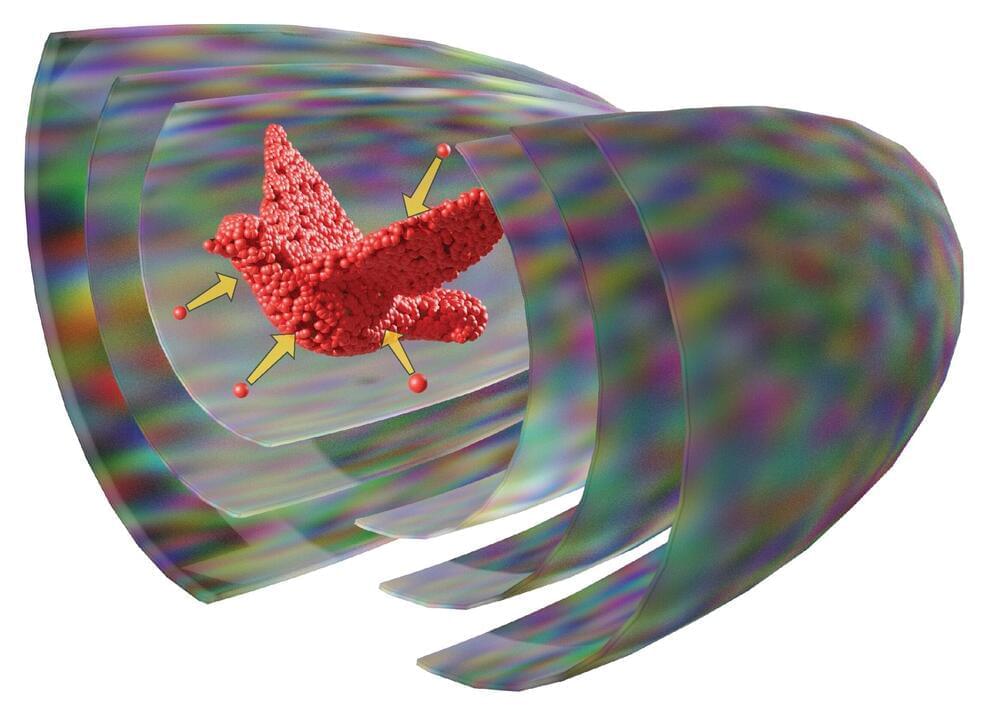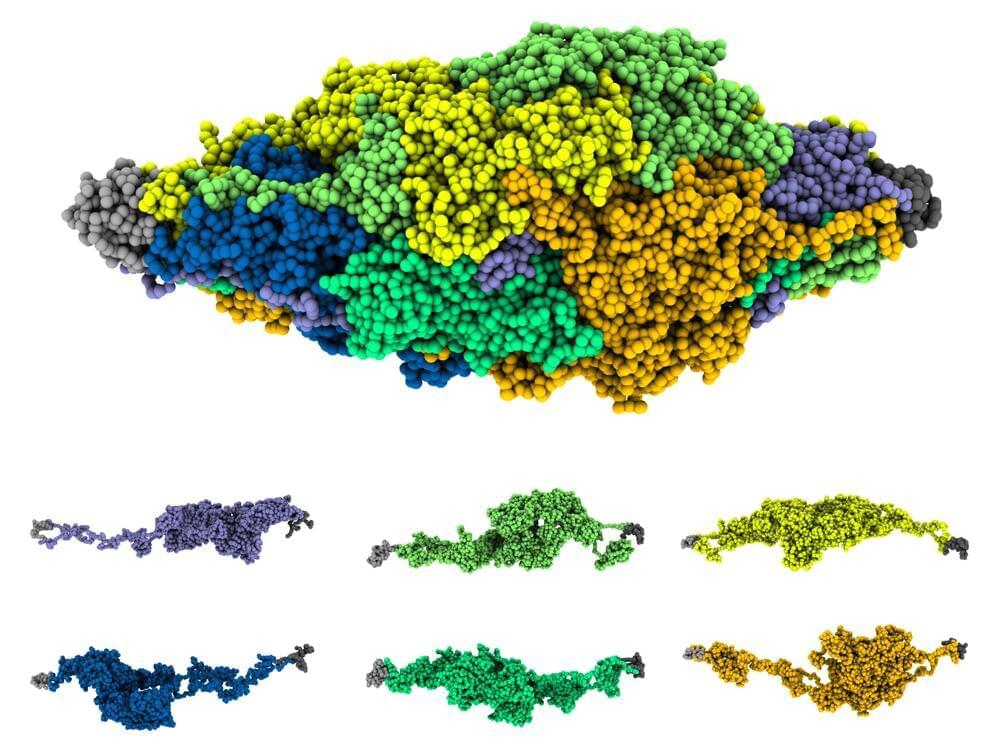Genome-wide studies have identified 27 risk loci associated with attention-deficit hyperactivity disorder and shown its genetic link with other psychiatric conditions.


Join us on Patreon!
https://www.patreon.com/MichaelLustgartenPhD
Discount Links:
NAD+ Quantification.
Use Code: ConquerAging At Checkout.
https://www.jinfiniti.com/intracellular-nad-test/
Green Tea.
https://www.ochaandco.com/?ref=conqueraging.
Oral Microbiome.
Use Code: ConquerAging15
https://www.bmq30trk.com/4FL3LK/GTSC3/
Epigenetic Testing.
CONQUERAGING!
https://bit.ly/3Rken0n.
At-Home Blood Testing.
This has been the news lately. This is a good breakdown of info and apparently Katcher wishes to do dog trials.
In this video we provide a quick update on activities at Yuvan Research. It is very exciting to see that Sima, the last remaining rat in the E5 trial is still alive and has surpassed the age of the previous record for lifespan of a Sprague Dawley rat.
Dr Katcher’s Interview: _https://www.youtube.com/watch?v=DpIbEluiN3o_
NTZ Newsletter sign up: _https://www.ntzplural.com/newsletter_
Article in the Guardian: _https://www.theguardian.com/science/2023/feb/08/anti-ageing-…g-lab-rat_
Renue By Science 10% of all products: https://tinyurl.com/4yrf4tv3
*Renue By Science* 10% : _https://tinyurl.com/4yrf4tv3_
Use SUBMHS when buying subscriptions for a continued discount of renewal orders.
*DoNotAge* 10% discount code MODERNHEALTHSPAN _https://donotage.org/products/_
*ProHealth* 10% discount Code MODERN : _https://prohealth.pxf.io/c/3176409/1541296/17976_
*NOVOS* Core & NOVOS Boost $5 off with code MODERN5 _https://novoslabs.com/?ref=3957_
*Bulletproof* 15% off with coupon code: HEALTHSPAN15: _https://tinyurl.com/4npjk5vp_
☕If you would like to support our channel, we’d love a coffee…thank you! _https://www.buymeacoffee.com/mhealthspan_

Apitherapy is an emerging field with the potential to impact the economic aspects of cancer research globally, particularly in under-resourced communities. To date, however, studies are yet to fully investigate the molecular mechanism of action of honeybee venom and melittin, and their consequent optimum usage in the oncology arena is yet to be comprehensively investigated, particularly for the treatment of breast cancer, the most commonly occurring cancer in women worldwide2. TNBCs and HER2-enriched tumors are highly aggressive breast cancer subtypes. TNBC is associated with the highest mortality and, despite frequent EGFR expression, commonly displays resistance to anti-EGFR therapies with high dependence on PI3K/Akt signaling for proliferation, survival, and chemotherapy resistance34.
Anti-HER2 therapies have substantially improved long-term survival in early-stage HER2-positive cancers, but the majority of late-stage patients eventually develop resistance and succumb to the disease33,35,36. Not only did we demonstrate selectivity of honeybee venom and melittin for malignant cells, but we also revealed higher potencies for these aggressive types of breast cancer.
Here, we show that honeybee venom and melittin suppress the ligand-induced phosphorylation of EGFR and HER2, dynamically modulating downstream signaling pathways in breast cancer cells. We propose that melittin directly or indirectly inhibits RTK dimerization. Melittin may also enter the cell to directly or indirectly modulate downstream signaling pathways25,60. Previous work has shown that melittin can be targeted to HER2-overexpressing cell lines using immunoliposomes bearing trastuzumab61. Here, we demonstrate that melittin alone selectively targets HER2-and EGFR-overexpressing breast cancer cells. Interestingly, melittin was more potently toxic to breast cancer cells compared to honeybee venom, warranting further investigation.

Scientists from the Micro, Nano and Molecular Systems Lab at the Max Planck Institute for Medical Research and the Institute for Molecular Systems Engineering and Advanced Materials at Heidelberg University have created a new technology to assemble matter in 3D. Their concept uses multiple acoustic holograms to generate pressure fields with which solid particles, gel beads and even biological cells can be printed.
These results pave the way for novel 3D cell culture techniques with applications in biomedical engineering. The results of the study were published in the journal Science Advances.
Additive manufacturing or 3D printing enables the fabrication of complex parts from functional or biological materials. Conventional 3D printing can be a slow process, where objects are constructed one line or one layer at a time. Researchers in Heidelberg and Tübingen now demonstrate how to form a 3D object from smaller building blocks in just a single step.

When it comes to DNA, one pesky mosquito turns out to be a rebel among species.
Researchers at Rice University’s Center for Theoretical Biological Physics (CTBP) are among the pioneers of a new approach to studying DNA. Instead of focusing on chromosomes as linear sequences of genetic code, they’re looking for clues on how their folded 3D shapes might determine gene expression and regulation.
For most living things, their threadlike chromosomes fold to fit inside the nuclei of cells in one of two ways. But the chromosomes of the Aedes aegypti mosquito—which is responsible for the transmission of tropical diseases such as dengue, chikungunya, Zika, mayaro and yellow fever—defy this dichotomy, taking researchers at the CTBP by surprise.

The first time a language model was used to synthesize human proteins.
Of late, AI models are really flexing their muscles. We have recently seen how ChatGPT has become a poster child for platforms that comprehend human languages. Now a team of researchers has tested a language model to create amino acid sequences, showcasing abilities to replicate human biology and evolution.
The language model, which is named ProGen, is capable of generating protein sequences with a certain degree of control. The result was achieved by training the model to learn the composition of proteins. The experiment marks the first time a language model was used to synthesize human proteins.
A study regarding the research was published in the journal *Nature Biotechnology Thursday. *The project was a combined effort from researchers at the University of California-San Francisco and the University of California-Berkeley and Salesforce Research, which is a science arm of a software company based in San Fransisco.
## The significance of using a language model
Researchers say that a language model was used for its ability to generate protein sequences with a predictable function across large protein families, akin to generating grammatically and semantically correct natural language sentences on diverse topics.
“In the same way that words are strung together one-by-one to form text sentences, amino acids are strung together one-by-one to make proteins,” Nikhil Naik, the Director of AI Research at Salesforce Research, told *Motherboard*. The team applied “neural language modeling to proteins for generating realistic, yet novel protein sequences.”
The rise of social media has changed our day to day lives. But more and more reports show that social media and especially social media can impact our brain. Social media addiction might also to a decline in mental health. How does social media changes us? And are the effects by social media addiction reversal?
🔬 Subscribe for more awesome biomedical research: https://bit.ly/2SRMqhC
📸 IG: instagram.com/clemens.steinek.
🔬Twitter: https://twitter.com/CSteinek.
Social media has been developed to connect people. However, quite early, scientists found that social media (and social media addiction) can lead to changes in the brain such an enlarged amygdala. First reports surfaced showing that people compare their lives to lives they see on social media and report a decline of mental health upon heavy social media use. It seems like our brains cannot distinguish between social media and the real world. Social media also led to an attention span crisis meaning that we have a harder time to focus if we spend much time on social media. Moreover, social media is able to feed into the reward system of our brains. Everytime we perceive something good dopamine producing cells in the brain release dopamine which leads to a good feeling. Social media has used this mechanism to provide us with a constant stream of good feelings. Social media algorithms have been optimize to show more social media content in a shorter period of time leading to more dopamine. As a result, some argue that social media addiction should be recognized as a mental disorder.
Besides negatively impacting our brains on an individual level social media and social media addiction also impacts society. Last year, a sharp rise in tic symptoms have been reported among teenagers in the US. It seems like that tic-related content on tiktok together with anxiety caused by the COVID-19 pandemic led to this rise in tic-like symptoms. So what should we do about social media? And how can we ensure that our brains are not negatively impacted by the constant stream of dopamine? Well, sometimes the best thing is just to avoid social media for a while.
References:
https://www.ncbi.nlm.nih.gov/pmc/articles/PMC6502424/
https://fortune.com/2022/03/31/teen-girls-tourette-tics-tiktok/
https://onlinelibrary.wiley.com/doi/full/10.1111/jpc.15932
https://www.sciencedirect.com/science/article/pii/S0960982214014870
https://onlinelibrary.wiley.com/doi/abs/10.1111/adb.12570
https://www.pnas.org/doi/abs/10.1073/pnas.0903620106
https://www.nature.com/articles/nn.2724?luicode=10000011&lfi.…2724.html.
https://psycnet.apa.org/record/2018-22977-002
https://www.liebertpub.com/doi/full/10.1089/cyber.2021.0324
https://link.springer.com/article/10.1007/s40519-017-0364-2
https://www.tandfonline.com/doi/pdf/10.1080/02673843.2019.1590851
https://www.tandfonline.com/doi/abs/10.1080/00224545.2019.1578725
https://movementdisorders.onlinelibrary.wiley.com/doi/10.1002/mds.28778
https://www.liebertpub.com/doi/abs/10.1089/cyber.2018.0701
Images:
Most videos and images are derived from: pixabay.com, pexels.com and videvo.net.
Savant syndrome is a strange condition that gives people unique abilities. Although savant syndrome is very rare reported cases gain genius-like abilities in narrow domains. But how can we explain savant syndrome? And could we induce savant syndrome in normal people?
🔬 Subscribe for more awesome biomedical research: https://bit.ly/2SRMqhC
📸 IG: instagram.com/clemens.steinek.
🔬Twitter: https://twitter.com/CSteinek.
Savant syndrome is characterized by unique skills in art, music, mechanics, calendar calculation or maths. Savant syndrome can be acquired through injuries or frontotemporal dementia or be developed in people with autism spectrum disorder. In acquired savant syndrome and autism spectrum disorder, unique connections in the brain led to the condition. In savant syndrome, we often find that the left hemisphere is damaged and the right brain hemisphere has to compensate for this. Based on this observation, we can partially induce savant syndrome like abilities through transcranial magnetic stimulation. Many questions concerning savant syndrome remain but this condition is truly amazing.
0:00–1:10 Intro.
1:10–1:56 What is Savant Syndrome?
1:56–4:02 Acquiring Savant Syndrome.
4:02–5:46 Savant Syndrome and Autism Spectrum Disorder.
5:46–8:39 Can we Induce Savant Syndrome?
Images:
We all know that exercise is good for our health. But besides lowering the risk of obesity or type II diabetes, exercise has also been shown to benefit our brain. More precisely, exercise modifies parts of the brain and improves memory, attention and improves mood. Regular exercise further lowers the risk to suffer from dementia or depression. But how does exercise benefit our brains?
🔬 Subscribe for more awesome biomedical research: https://bit.ly/2SRMqhC
📸 IG: instagram.com/clemens.steinek.
🔬Twitter: https://twitter.com/CSteinek.
Philosophers have speculated for centuries that exercise promotes our brain functionality but only a few decades ago, scientists uncovered that this is true. Studies have shown that children who are more athletic perform better in creativity, concentration, maths verbal and IQ tests. These children also tend to have a larger hippocampus and basal ganglia both of which are important for memory and attention span. Adults who started to workout regularly also have changes in their brain and perform better in various tests. There are several mechanisms which explain this phenomenon. When we exercise, brain cells release VEGF which helps to supply the brain with oxygen. Moreover, neurotrophins are released when we workout which helps the survival of brain cells. Exercise also seems to improve neuroplasticity through the same pathways. Since exercise leads to the release of neurotransmitters such as serotonin, workouts also have been used to treat mental disorders such as depression. In various studies it was seen exercise helps to alleviate the symptoms of people who suffer from major depression.
The literature suggests roughly 150 minutes of moderate-intensity exercise or 75 minutes of vigorous-intensity exercise per week might be optimal to curb the risk of heart disease and 19 other chronic diseases. Concerning brain health, 120 minutes of moderate exercise a week might be enough to get all the benefits we have seen before. But even if you do less you might see a difference in the long run. In general, aerobic exercise seemed to have the best impacts on your brain. Jogging, running, swimming and all other forms of aerobic sports might give the benefits we have seen in this video!
References:
https://www.nature.com/articles/s41591-018-0275-4
https://www.pnas.org/doi/abs/10.1073/pnas.0905307106
https://pubmed.ncbi.nlm.nih.gov/20693803/
https://www.sciencedirect.com/science/article/abs/pii/S0025619616300477
https://www.frontiersin.org/articles/10.3389/fpsyg.2019.02658/full.
https://ajp.psychiatryonline.org/doi/pdf/10.1176/ajp.2007.164.2.350a.
https://www.health.harvard.edu/blog/regular-exercise-changes…1404097110
https://www.ncbi.nlm.nih.gov/pmc/articles/PMC2702700/pdf/nihms117644.pdf.
https://stanford.library.sydney.edu.au/archives/spr2020/entr…stPhilSpor.
https://www.frontiersin.org/articles/10.3389/fpsyt.2018.00762/full.
https://journals.sagepub.com/doi/full/10.1177/23259671211001129
https://www.frontiersin.org/articles/10.3389/fpsyg.2018.00509/full.
https://www.cdc.gov/nccdphp/dnpao/features/physical-activity-brain-health/
https://www.ncbi.nlm.nih.gov/pmc/articles/PMC6943756/pdf/main.pdf.
https://www.ncbi.nlm.nih.gov/pmc/articles/PMC5457513/pdf/ncomms15557.pdf.
https://positivepsychology.com/exercise-neurological-benefits/
00:00–00:53 Intro.